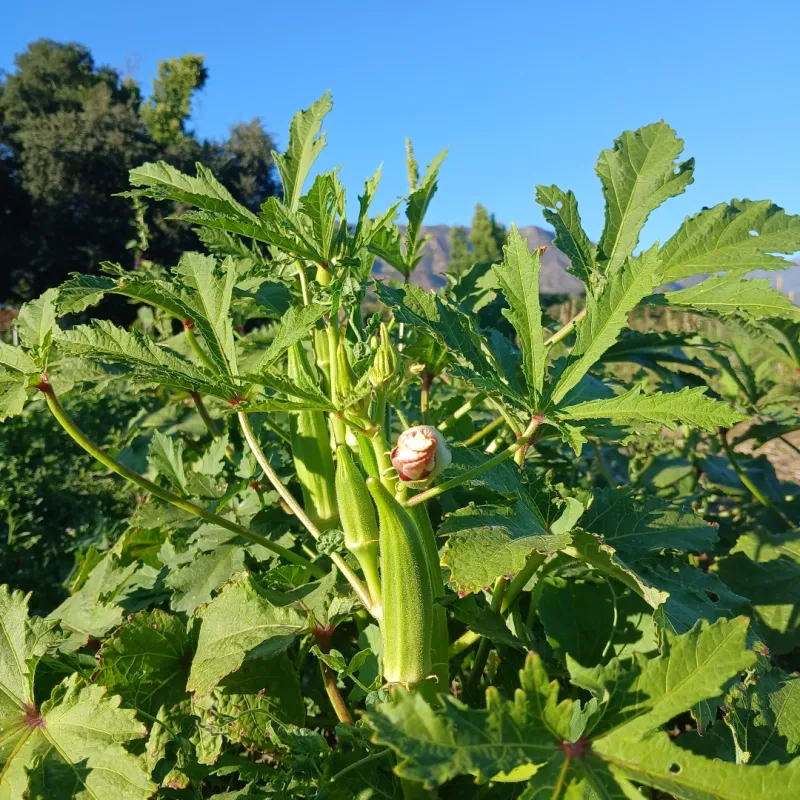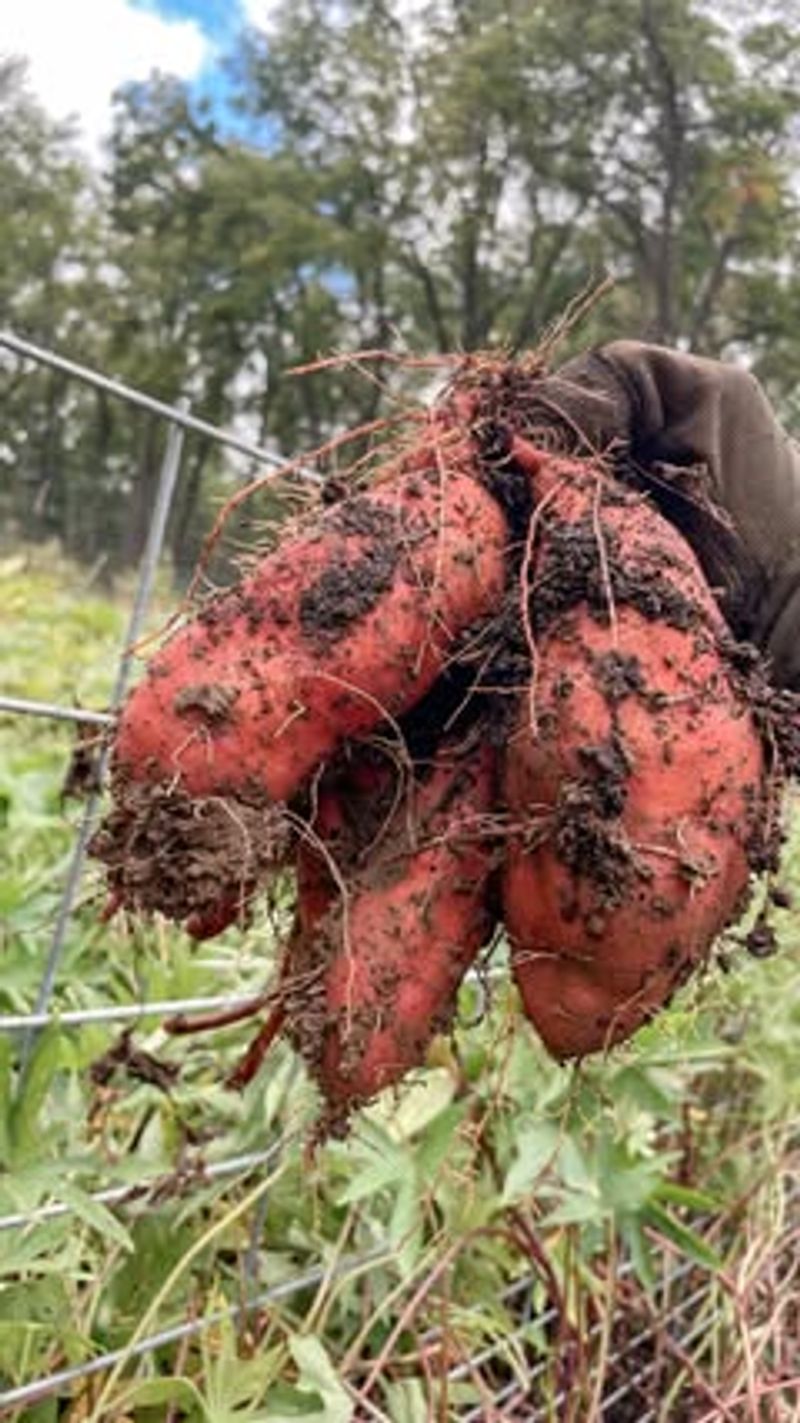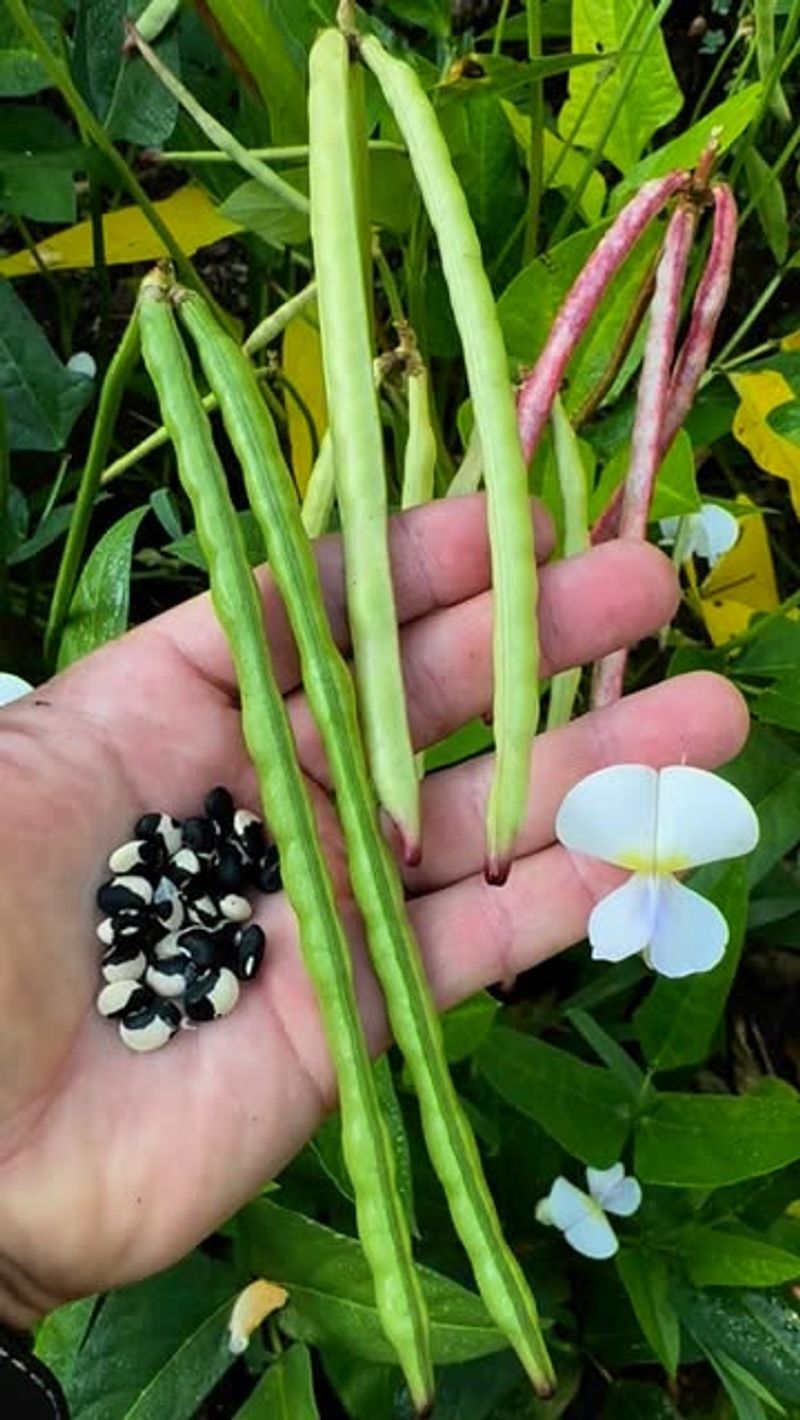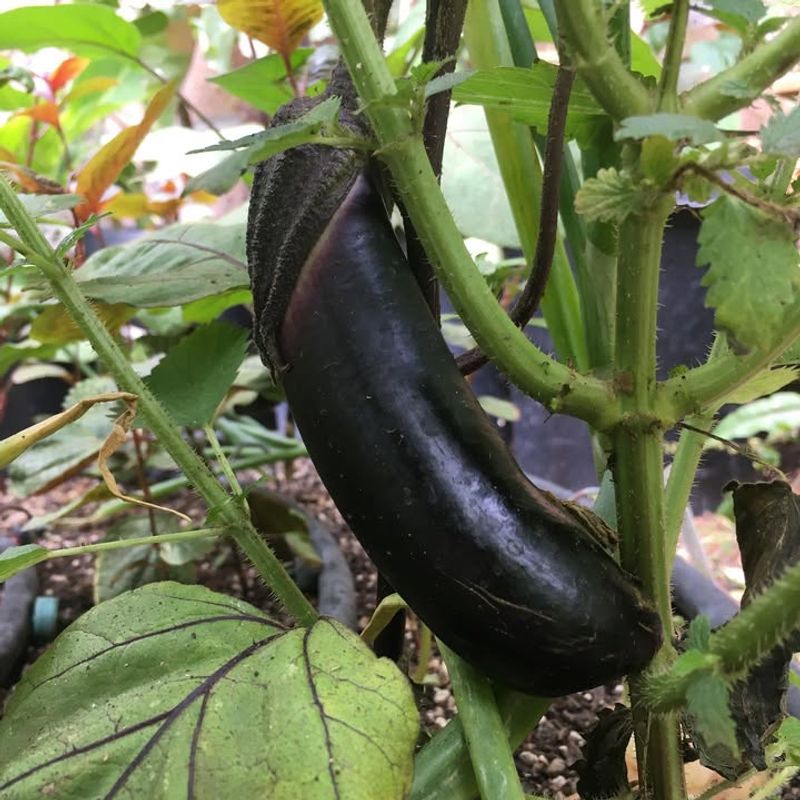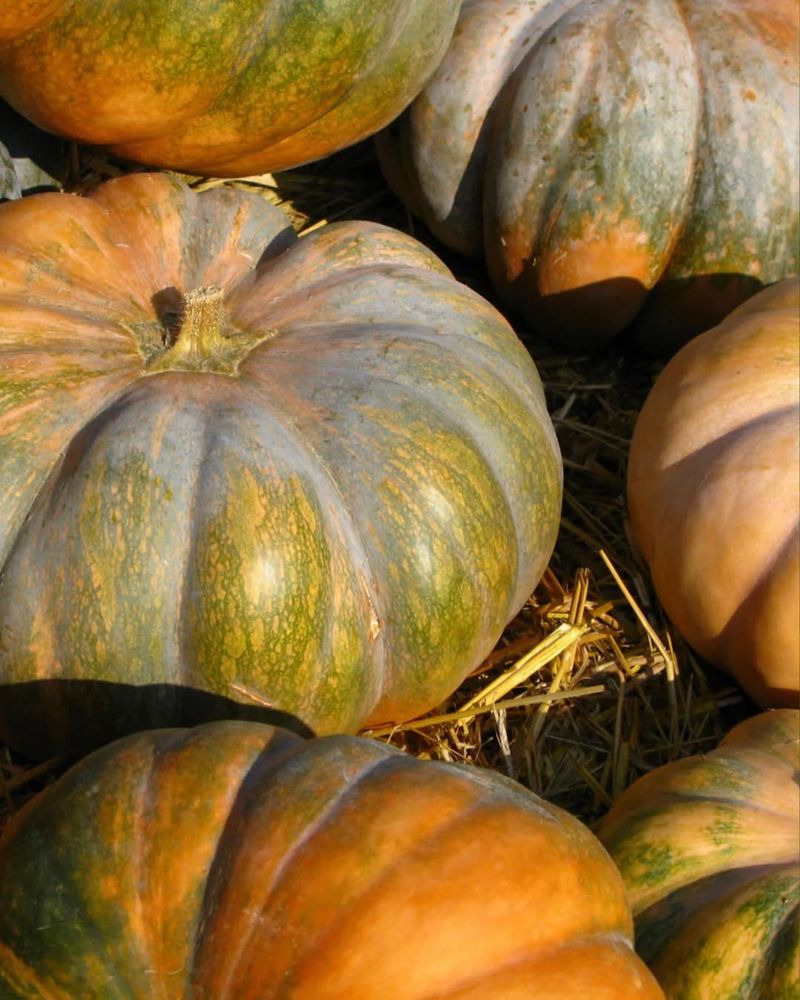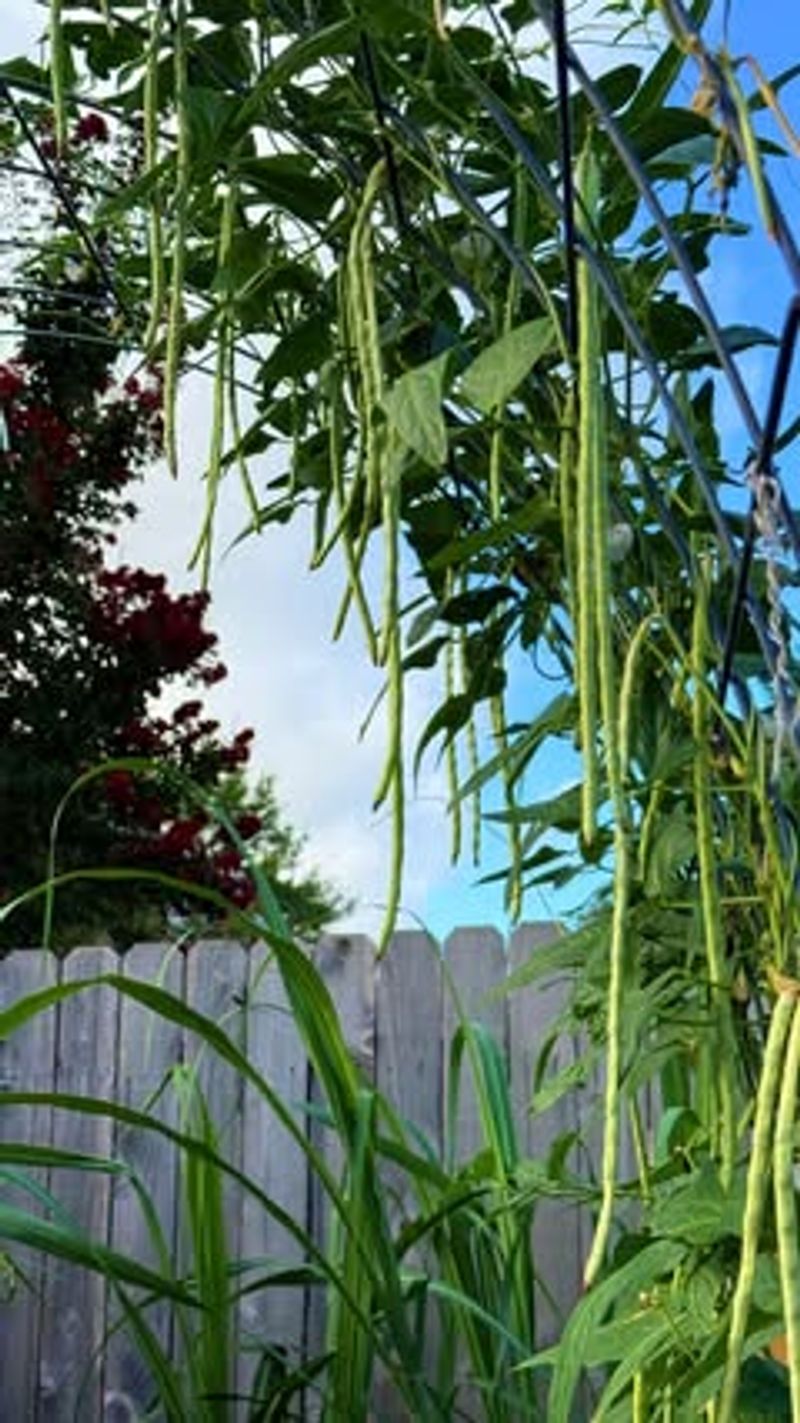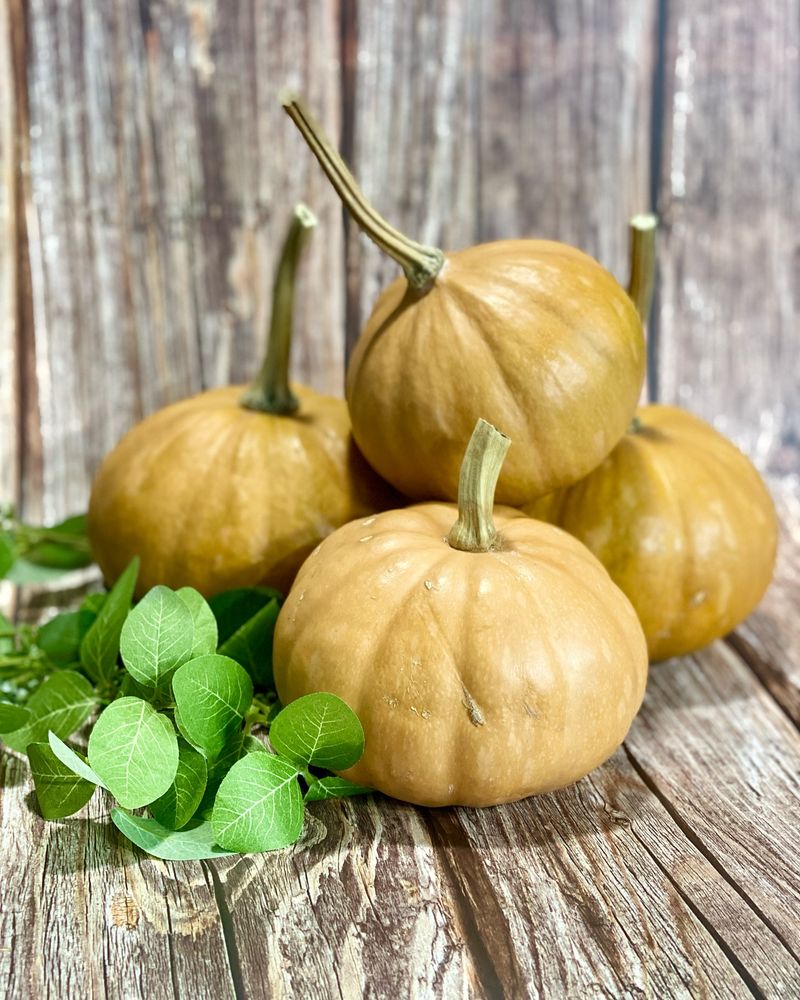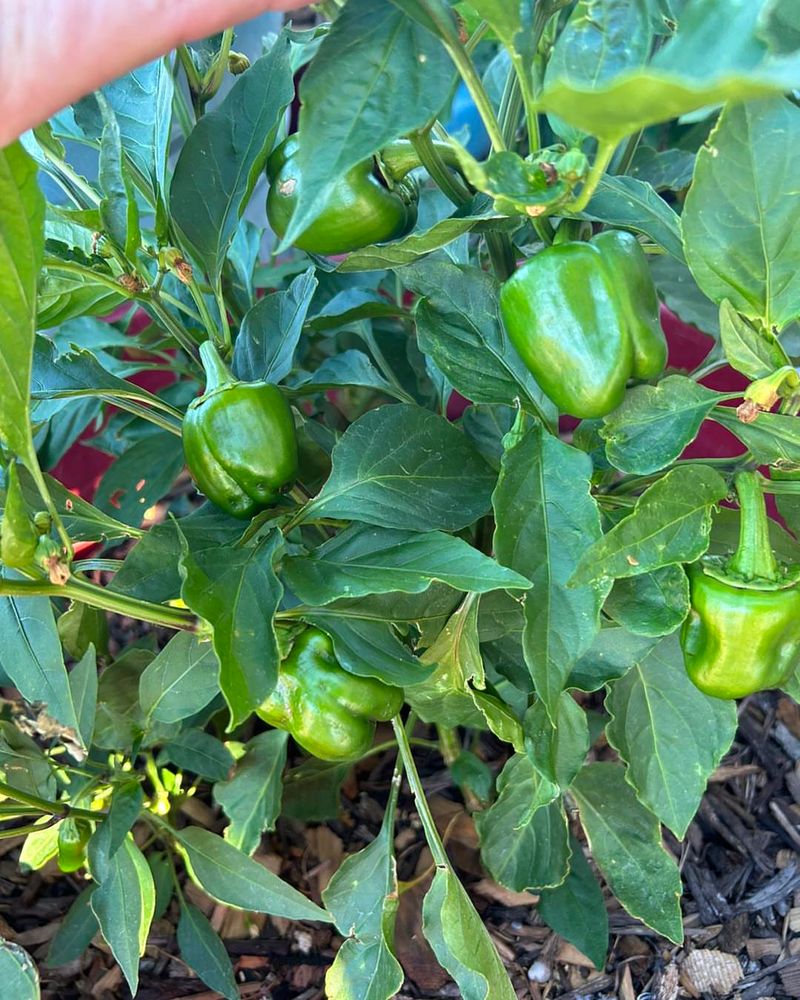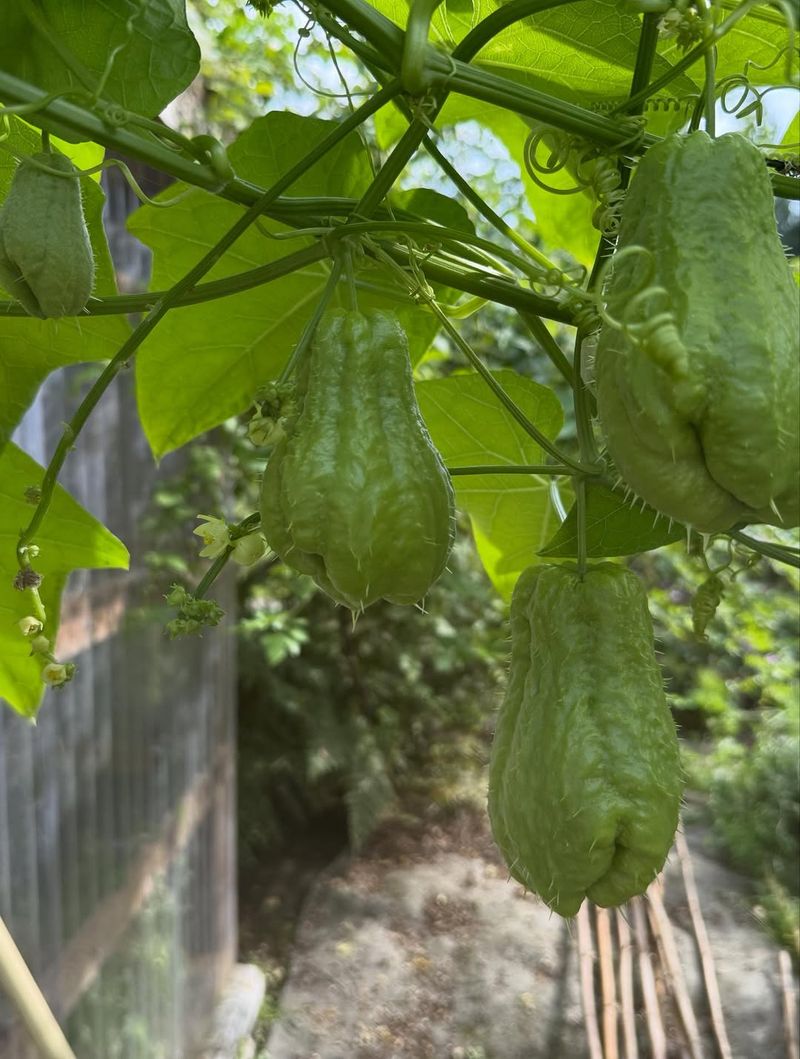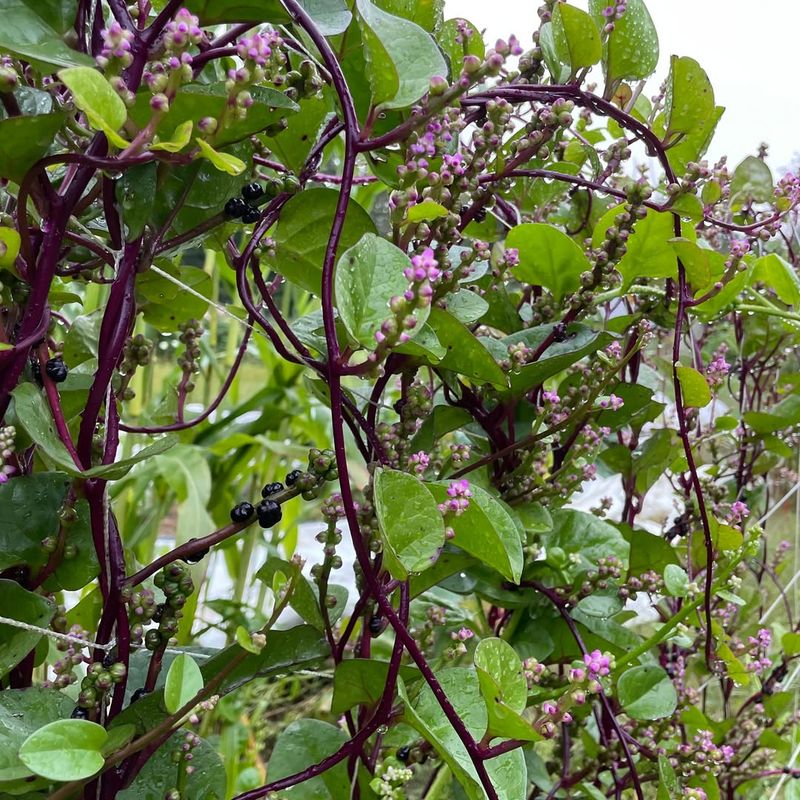Florida gardening can feel like a steam room, but some veggies actually love that humid chaos. I’ve seen plenty of plants give up on me while these sturdy growers kept pushing through like nothing bothered them.
It’s a relief to grow something that doesn’t freak out every time the Florida air gets heavy. Let’s get into the veggies that stay strong, stay flavorful, and make gardening in Florida feel a whole lot easier.
1. Okra
With its love for scorching temperatures and sticky air, okra becomes a superstar in Florida gardens. Pods develop quickly once plants start flowering, giving you plenty of harvests throughout summer.
Plant seeds directly in your garden bed after the last frost passes. Within two months, you’ll be picking tender pods every few days.
Florida gardeners appreciate how okra keeps producing even when other vegetables struggle with the intense humidity and heat waves that sweep through the state regularly.
2. Sweet Potatoes
Nothing beats sweet potatoes when it comes to handling Florida’s muggy weather patterns. Vines spread enthusiastically across garden beds, creating beautiful ground cover while tubers develop underground.
Start with slips purchased from garden centers in spring. Plant them in loose, well-draining soil and watch them take off.
By fall, Florida growers dig up impressive harvests of orange-fleshed tubers perfect for baking, roasting, or making into delicious side dishes for family dinners year-round.
3. Southern Peas
Did you know that Southern peas aren’t actually peas at all but relatives of beans? Black-eyed peas, crowder peas, and zipper peas all fall into this category and absolutely adore Florida summers.
Seeds germinate rapidly in warm, moist soil. Plants grow quickly and produce pods loaded with nutritious legumes.
Florida families have grown these protein-packed vegetables for generations, enjoying them fresh or dried for cooking throughout winter when gardens slow down considerably.
4. Eggplant
Glossy purple fruits develop beautifully when Florida’s humidity wraps around eggplant leaves like a warm blanket. Heat-loving plants produce steadily from late spring through early fall.
Choose varieties bred for Southern gardens to get the best results. Transplant seedlings after soil warms thoroughly in spring.
Gardeners across Florida harvest gorgeous eggplants perfect for grilling, making parmesan dishes, or adding to summer stir-fries when appetites crave something fresh and flavorful from homegrown sources.
5. Cherry Tomatoes
While large tomatoes sometimes struggle with Florida’s moisture, cherry varieties bounce back with impressive resilience. Smaller fruits ripen faster and resist splitting better than their bigger cousins.
Plant them in spring or fall when temperatures moderate slightly. Provide stakes or cages for support as vines grow tall.
Florida gardeners snack on sweet cherry tomatoes straight from the vine, toss them into salads, or share abundant harvests with neighbors who appreciate homegrown flavor.
6. Calabaza Squash
This tropical pumpkin variety laughs in the face of humidity that would make other squash varieties wilt. Calabaza produces enormous fruits with sweet, dense orange flesh inside hard rinds.
Vines spread aggressively, so give them plenty of room to roam. Plant seeds in mounds after frost danger passes completely.
Cooks throughout Florida use calabaza in traditional Caribbean and Latin American recipes, making soups, stews, and desserts that celebrate the state’s multicultural food heritage beautifully.
7. Yard-Long Beans
Imagine picking beans that stretch nearly three feet long from vigorous vines climbing up trellises. Yard-long beans, also called asparagus beans, thrive magnificently in Florida’s steamy summer conditions.
Provide sturdy supports for these enthusiastic climbers. Seeds sprout quickly in warm, moist soil typical of Florida springs.
Harvest pods while still tender and cook them like regular green beans. Florida gardeners love how productive these plants become, offering continuous harvests throughout hot months.
8. Seminole Pumpkin
Native to Florida, Seminole pumpkins evolved specifically to handle the state’s challenging growing conditions. Vines resist pests and diseases that plague other squash varieties in humid climates.
Plant them where they can sprawl freely across garden beds or even climb fences. Seeds germinate reliably in spring warmth.
Florida heritage gardeners treasure this heirloom variety for its historical significance and reliable production. Fruits store for months, providing nutritious food long after harvest season ends completely.
9. Peppers
Both sweet bells and fiery hot peppers flourish when Florida’s humidity teams up with abundant sunshine. Plants often become perennial in southern parts of the state, producing for multiple years.
Start seeds indoors or purchase transplants for spring planting. Space plants adequately to allow air circulation around foliage.
From mild banana peppers to scorching habaneros, Florida gardeners enjoy incredible variety. Fresh peppers add flavor and nutrition to countless dishes prepared in kitchens statewide daily.
10. Chayote
Originally from Central America, chayote feels right at home in Florida’s tropical-like environment. Perennial vines produce pear-shaped fruits throughout warm months with minimal fuss or attention.
Plant whole fruits in spring, allowing the seed inside to sprout. Vines grow vigorously, requiring strong trellises for support.
Florida cooks incorporate mild-flavored chayote into stir-fries, soups, and salads. Young shoots and roots are also edible, making this plant incredibly versatile for adventurous gardeners.
11. Malabar Spinach
When regular spinach bolts in Florida heat, Malabar spinach keeps right on growing. Thick, succulent leaves thrive in conditions that would devastate cool-season greens completely.
Vines climb enthusiastically, so provide vertical supports. Plant seeds after soil warms thoroughly in late spring.
Florida gardeners harvest tender leaves throughout summer for salads, smoothies, or cooking like traditional spinach. Red-stemmed varieties add ornamental beauty while producing nutritious greens simultaneously.
12. Cassava
Also called yuca, cassava develops starchy roots that feed millions worldwide. Florida’s climate mirrors the tropical regions where cassava originated, making cultivation surprisingly straightforward.
Plant stem cuttings directly in garden beds during warm months. Roots develop slowly over eight to twelve months underground.
Harvest mature roots carefully, as they contain compounds requiring proper cooking before eating. Florida’s diverse communities appreciate cassava for traditional recipes connecting them to cultural roots and ancestral homelands.


